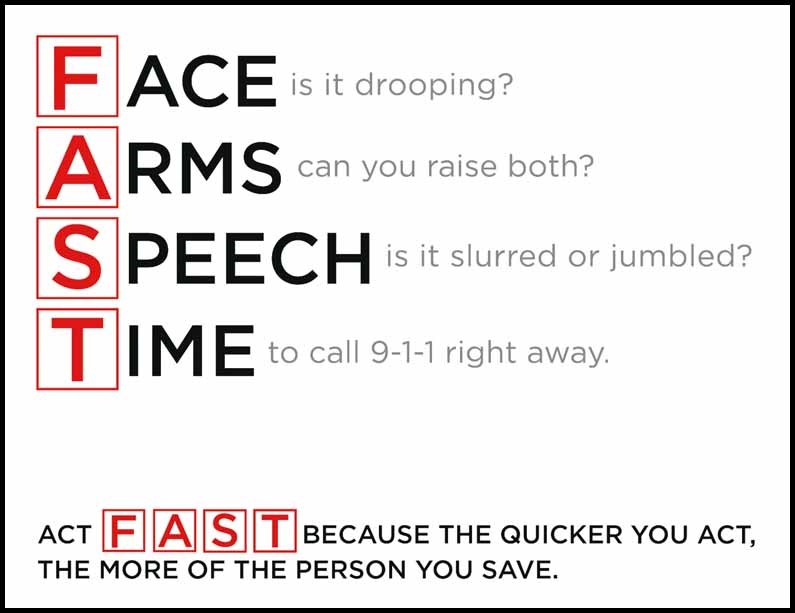The Heart and Stroke Foundation has launched a new national campaign to raise awareness of the signs of stroke based on FAST, a simple and effective educational approach that is being used in many countries with success. Ability to recognize the signs of stroke and take quick action can mean the difference between life and death, or between a full recovery and lasting disability.
FAST stands for: Face – is it drooping? Arms – can you raise both? Speech – is it slurred or jumbled? And Time, to call 9-1-1 or your local emergency service right away. As a public awareness approach, FAST has been translated into several other languages around the world. In Quebec, the campaign will use VITE, for Visage, Incapacité, Trouble de la parole and Extrême urgence. FAST and VITE are short words that provide an easy way to remember the major signs of stroke, and remind people to take action as quickly as possible.
Not enough Canadians recognize the signs of stroke and know what to do. Stroke is the number three killer of Canadians, and one of the leading causes of disability. There are an estimated 62,000 strokes in Canada each year; that is one every nine minutes. Yet, more than 80 per cent of Canadians who have a stroke and make it to the hospital will survive, with varying degrees of recovery.
Toronto resident Stacey Yepes, 49, knows too well the importance of recognizing the signs of stroke. Last spring, Stacey made international headlines after recording herself on her mobile phone while experiencing a stroke, in order to show physicians her signs.
“The first time I had a stroke I immediately went to the emergency department. Having no visible symptoms and being in good health, I was told it was stress,” said Yepes. “I didn’t think it was stress, and within a few days I had two more strokes. The third time, when I felt my left side going numb, I grabbed my phone and hit record, so that I could show doctors exactly what I was experiencing.”
A subsequent MRI revealed Yepes had suffered a transient ischemic attack (TIA), also called a mini-stroke, resulting from atherosclerosis (a buildup in plaque in the arteries). “I now take a blood-thinner and a cholesterol-lowering medication as a preventive measure, and I have made lifestyle changes by exercising regularly and eating a healthier diet,” added Yepes.



